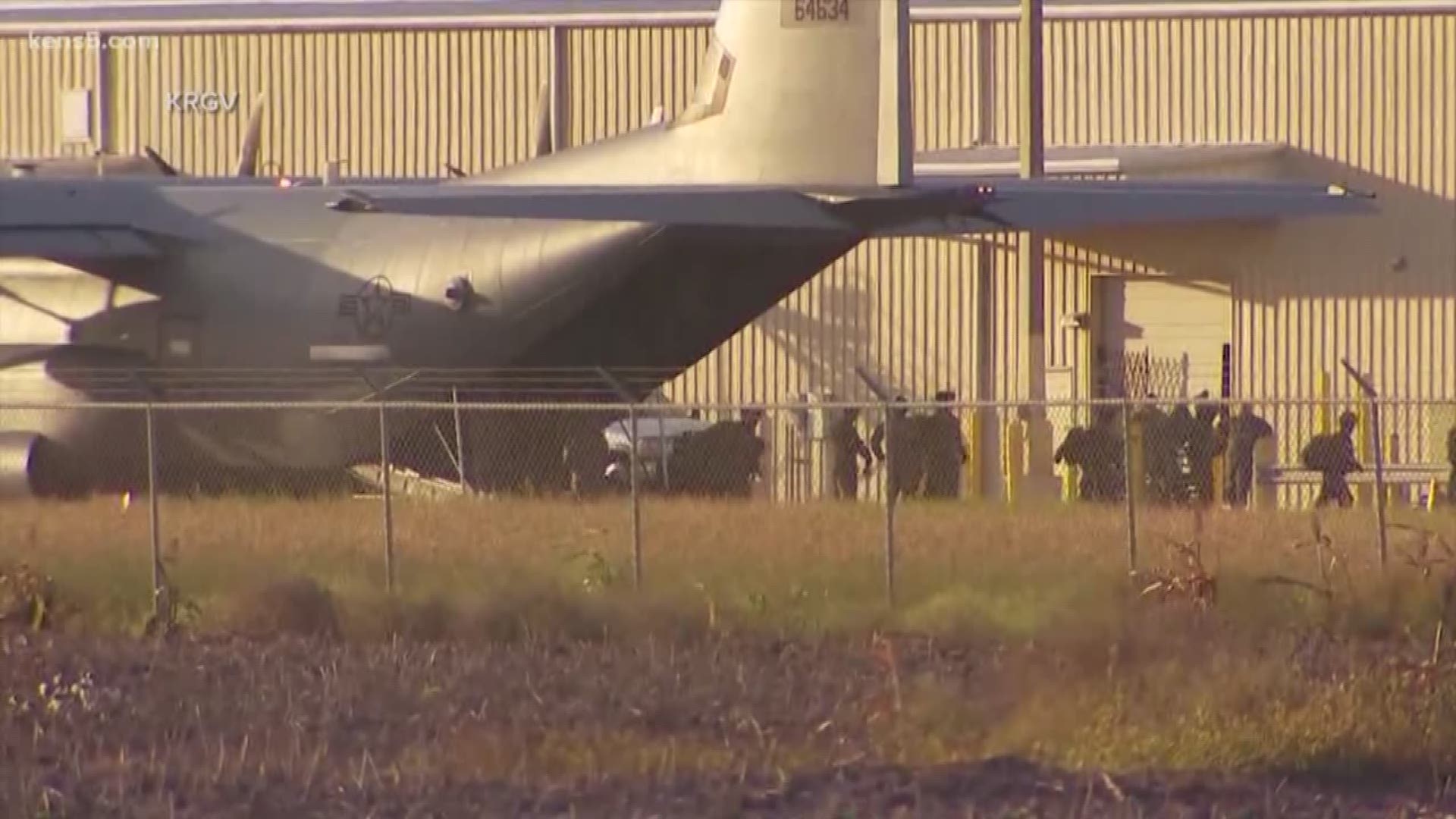The first waves of the migrant caravan arrived at the U.S.-Mexico border near Tijuana on Tuesday, but the vast majority of the Central Americans remained more than 1,000 miles away, trying to pick up their pace in their quest to seek asylum.
The roughly 350 migrants who reached the border were part of smaller splinter groups who grew impatient with the caravan's progress, preferring to forego the security of traveling in numbers to more quickly file their asylum claims in the United States, according to local authorities and migrant advocates.
But an estimated 5,000 migrants spent Monday night in the central Mexican city of Guadalajara, before enduring another round of frustration during their attempts to move farther north on Tuesday. More than 2,000 more have received temporary visas to stay in the country.
The state government of Jalisco organized buses to take the migrants to the next state to the north, Nayarit, where they expected to have other buses waiting for them to continue the trek north, according to a statement from Pueblo Sin Fronteras, a migrant advocacy group traveling with the caravan. But the buses dropped off the migrants 55 miles away from Nayarit, leaving the migrants stranded.
"This is a clear decision by the Jalisco state government to get us out of Guadalajara," Pueblo Sin Fronteras said in a statement. "It puts at risk the physical integrity, security and health of thousands of families with children, who are being left in the darkness of the early morning."
Migrants halfway to border
Despite the new round of difficulties, Guadalajara marked the halfway milestone for the caravan, which set out Oct. 12 from San Pedro Sula, Honduras, and has traveled roughly 1,400 miles. The caravan inched through Central America and southern Mexico, enduring brutal heat, torrential downpours and logistical complications.
The pace has accelerated as the group enters northern Mexico, sometimes traveling more than 100 miles a day, where temperatures are chillier than the subtropical south of the country. The capital city of Mexico City hosted the caravan for almost a week in a sports stadium at a cost of nearly $600,000, according to interim mayor José Ramón Avieva.
But some impatient with the slow, steady pace started splintering off.
The first couple of waves arrived in Tijuana on Tuesday. Another small group is risking the cartel-controlled territory of eastern Mexico to reach Texas, according to officials at a migrant shelter in Saltillo, about 190 miles south of Laredo, Texas.
"People need to see that they keep on moving or walking," said Rodrigo Abeja, project coordinator with Pueblo Sin Fronteras. "They get desperate when staying put."
The groups going it alone appear to be receiving support from Mexican officials. They are sleeping in shelters prepared by state and local governments, and being monitored, but not stopped, by immigration agents and police officers. In some cases, local governments are even providing bus rides, which happened Monday in the coastal state of Sinaloa, where some 400 migrants were given rides up the coast, according to local media.
Mexico issues 2,700 temporary visa
Others have been able to beg for funds or receive money from relatives for bus rides to the border, Abeja said. He added that federal officers were slowing traffic, which allowed caravan participants to hitch rides aboard everything from tractor trailers to agricultural vehicles.
The Mexican government has also offered refuge, asylum or work visas to caravan participants. The government said Monday that 2,697 temporary visas had been issued to individuals and families to cover them during the 45-day application process for more permanent status. Another 533 migrants have requested a voluntary return to their countries, the government reported.
Polls show Mexicans offering tepid support for the caravan. But other issues, led by the pending presidential transition on Dec. 1, have made more headlines.
A Consulta Mitofsky survey found 51.4 percent of respondents said Mexico should “help and protect” the caravan, while 33.8 percent said the government should “not help and pressure to return them to their countries.” Rural residents were more inclined to support the caravan crossing Mexico than urban dwellers, according to the survey.
Less than one percent of Mexico’s population is foreign-born, said Javier Urbano, a professor at the Iberoamerican University, who studies immigration. But with many Central Americans staying rather than transiting the country, the immigration debate "is just beginning."
New caravans headed north
As the main caravan and its splinter groups have moved north, more caravans are close behind with at least two winding their way north.
Migrants in a second caravan started arriving in Mexico City on Tuesday, picking over bundles of warm clothes as the temperature was set to fall into the low 40s. Few expressed haste to hit the road, having traveled the same grueling path as the original caravan.
"It’s been slow, but that’s because there are so many women and children," said Omar Cruz, 27, a painter from Honduras, who was fleeing gang violence at home and in no rush to reach the border. "The border's not going anywhere."
Like so many other caravan members walking ahead and behind him, Cruz wasn't dissuaded by the stories of the U.S. government attempting to impede asylum applications.
"The law lets a person apply for asylum," Cruz said. "If you're patient and have faith in God, you can make it happen."

